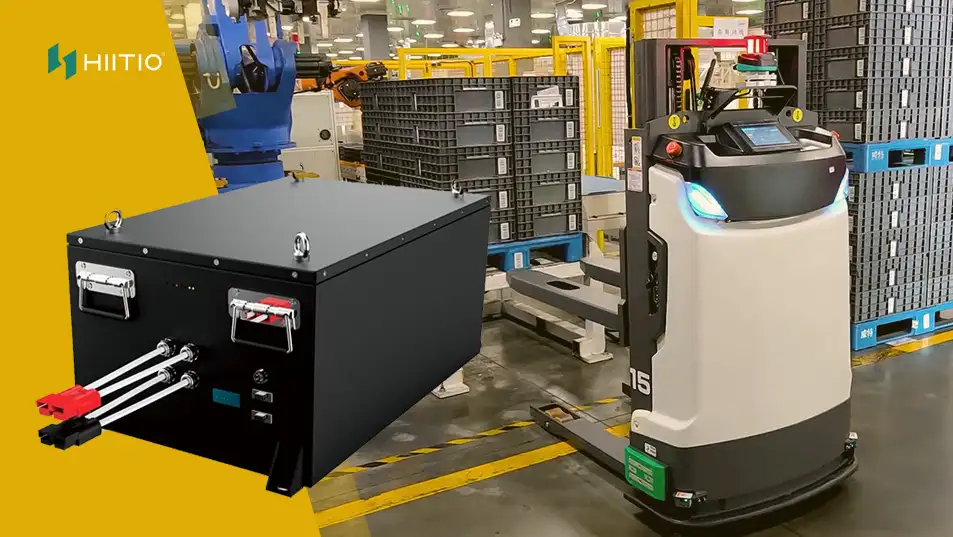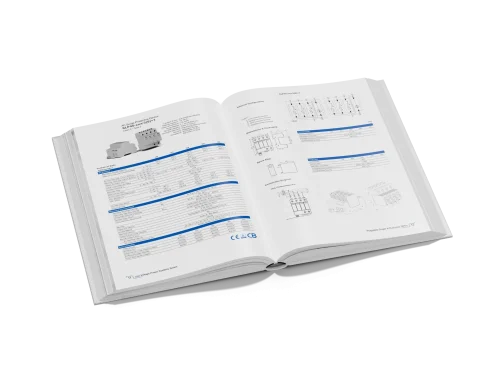The vision of factories running continuously without human intervention—often called “lights-out” or “dark factories”—is no longer science fiction. From Fanuc’s robot-building facility in Japan that operates for 30 days without supervision, to Xiaomi’s smart factory producing one smartphone per second, 24/7 automated manufacturing has become a competitive reality.
At the heart of this transformation are Automated Guided Vehicles (AGVs), the tireless workhorses moving materials, components, and products throughout these facilities. But what truly enables these AGVs to support non-stop operations? The answer lies in advanced battery technology that has fundamentally changed what’s possible in continuous manufacturing.
The Rise of AGVs in Modern Manufacturing
Automated Guided Vehicles have evolved from simple wire-following machines in the 1950s to sophisticated, intelligent mobile robots that are now integral to Industry 4.0 operations. These self-powered, programmable transport machines are used across diverse applications: from automotive assembly to food and beverage logistics, packaging, aerospace, and plastics manufacturing.
DIFFERENT TYPE OF AGV

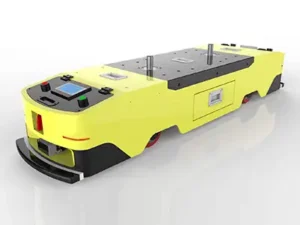

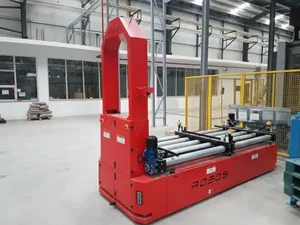
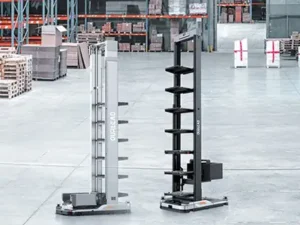
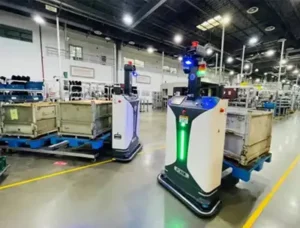
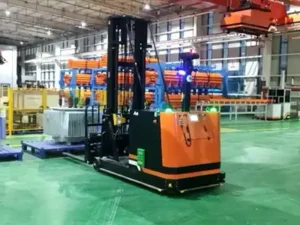
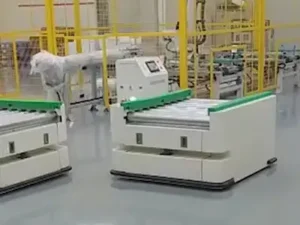
Today’s AGVs come in multiple configurations, each designed for specific manufacturing needs:
- Tow Tractors pull multiple carts loaded with materials throughout facilities, efficiently transporting large volumes in a single trip. These are particularly common in automotive and heavy manufacturing where bulk material movement is essential.
- Forklift AGVs replicate traditional forklift functions without human operators, autonomously stacking pallets, retrieving items from racks, and loading/unloading trucks. They’re widely deployed in warehouses and distribution centers where vertical storage and retrieval are critical.
- Unit Load Carriers specialize in transporting standardized containers, bins, or palletized goods. These vehicles integrate seamlessly with warehouse management software and production control systems, making them invaluable for high-throughput applications where minimizing human intervention is essential.
- Heavy-Duty AGVs handle exceptional loads—sometimes up to 250,000 pounds—in sectors like shipbuilding, aerospace, and steel manufacturing. These robust platforms are engineered with advanced drive systems and precision guidance for moving large machinery and oversized assemblies.
- Assembly Line AGVs deliver parts and components directly to workstations within production environments, operating at controlled speeds optimized for safety and efficiency in lean manufacturing operations.
The Battery Challenge in Continuous Operations
For all their advantages, early AGV implementations faced a critical limitation: power management. Traditional lead-acid batteries—the standard for decades—created significant operational constraints that prevented AGVs from reaching their full potential in 24/7 environments.
Lead-acid batteries require 6 to 8 hours of charging time, followed by an additional cooling period before they can be safely handled. This lengthy downtime forced manufacturers to choose between three undesirable options: maintain oversized AGV fleets to compensate for charging vehicles, implement complex battery swapping procedures that require dedicated personnel and infrastructure, or accept reduced operational hours that undermine the benefits of automation.
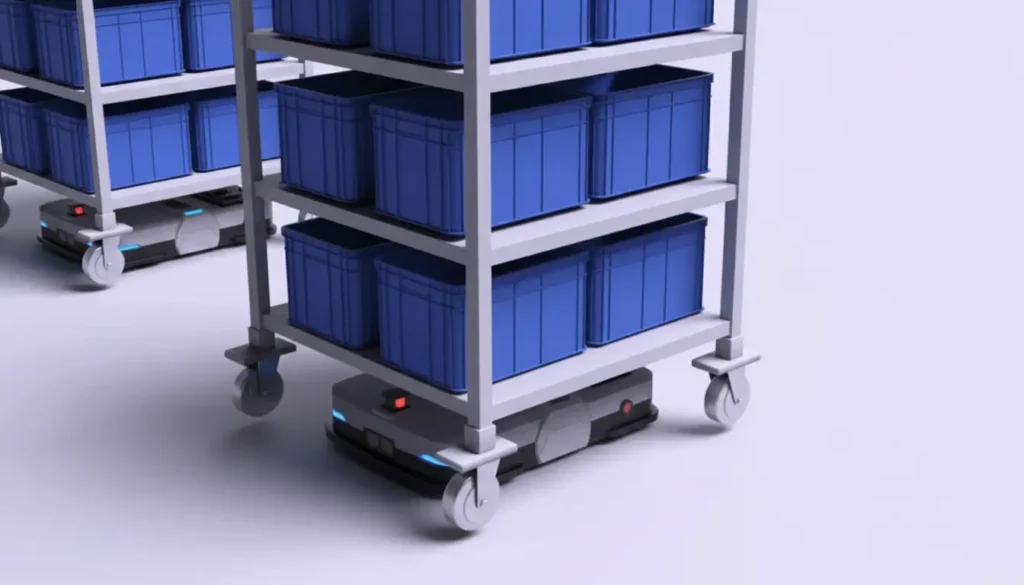

The thermal characteristics of lead-acid batteries further complicate 24/7 operations. These batteries generate substantial heat during both charging and discharging, requiring cooling periods and temperature-controlled charging environments. Their performance degrades significantly in cold conditions—a critical limitation for operations in cold storage facilities or plants with varying environmental conditions.
Perhaps most problematically, lead-acid batteries experience voltage sag as they discharge, meaning AGV performance gradually degrades throughout each work cycle. This variable performance makes it difficult to maintain consistent cycle times and predictable throughput—essential elements of efficient manufacturing operations.
The Battery Revolution: LiFePO4 Technology Changes Everything
The emergence of lithium iron phosphate (LiFePO4) battery technology has fundamentally transformed what’s possible in AGV-powered automation. This chemistry delivers a combination of characteristics specifically aligned with the demands of continuous manufacturing operations.
- Exceptional Cycle Life: LiFePO4 batteries provide over 4,000 charge cycles while maintaining efficiency—dramatically outlasting the 1,000 to 1,500 cycles typical of lead-acid batteries.
- Superior Energy Density: With energy densities ranging from 100 to 150 Wh/kg, LiFePO4 batteries are significantly lighter and more compact than lead-acid batteries, which typically offer only 30 to 50 Wh/kg.
- Consistent Power Delivery: Unlike lead-acid batteries that experience performance degradation as they discharge, LiFePO4 batteries maintain stable voltage and performance levels throughout their charge cycles.
- Thermal Stability: LiFePO4 chemistry exhibits exceptional thermal characteristics with minimal heat generation during both rapid charging and high-current discharging.
- Maintenance-Free Operation: Modern LiFePO4 AGV batteries are completely maintenance-free, eliminating the watering, equalization charging, and periodic inspections that lead-acid batteries require.
VIEW MORE HIITIO LiFePO4 AGV BATTERIES
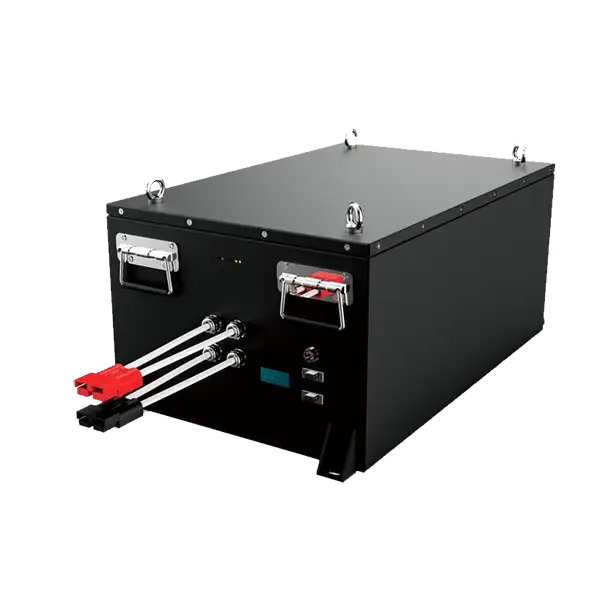
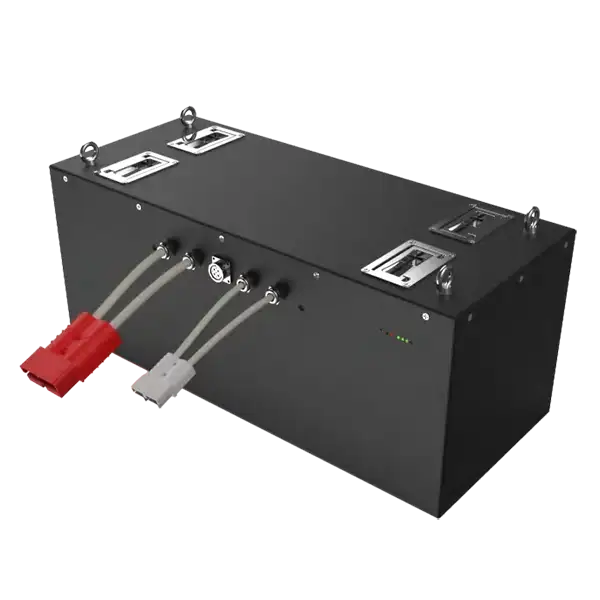
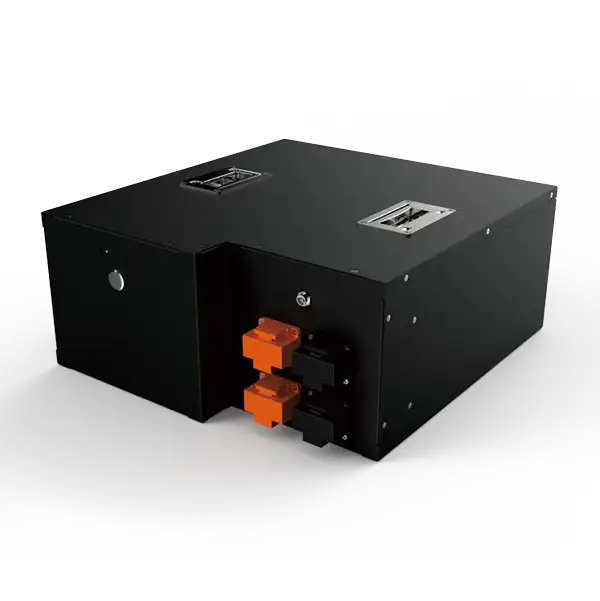

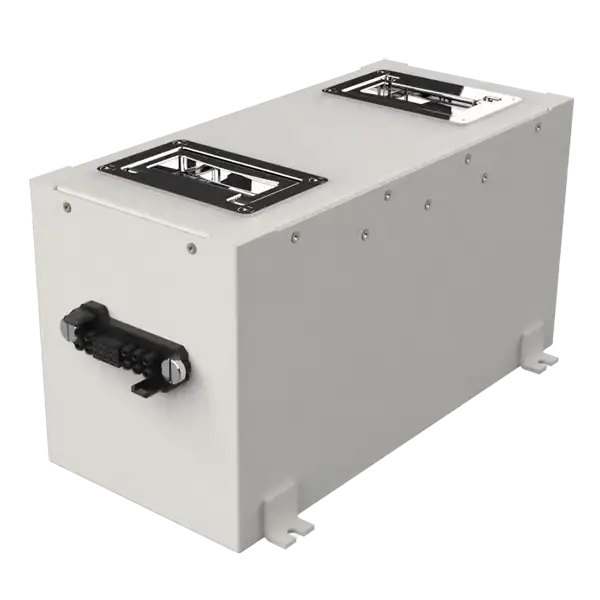
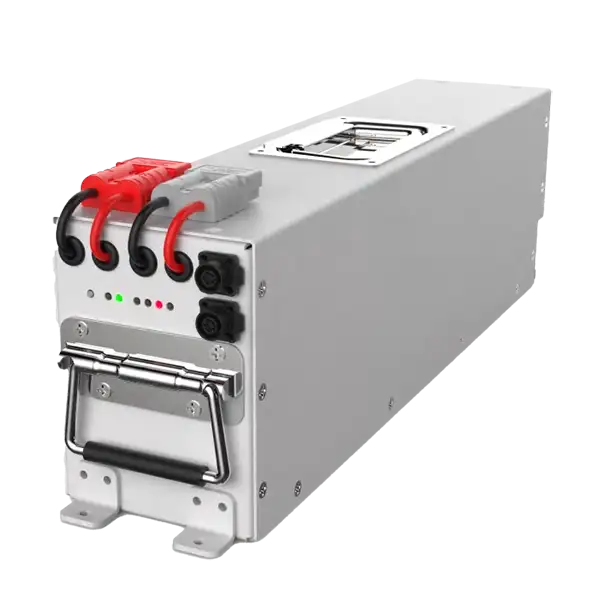
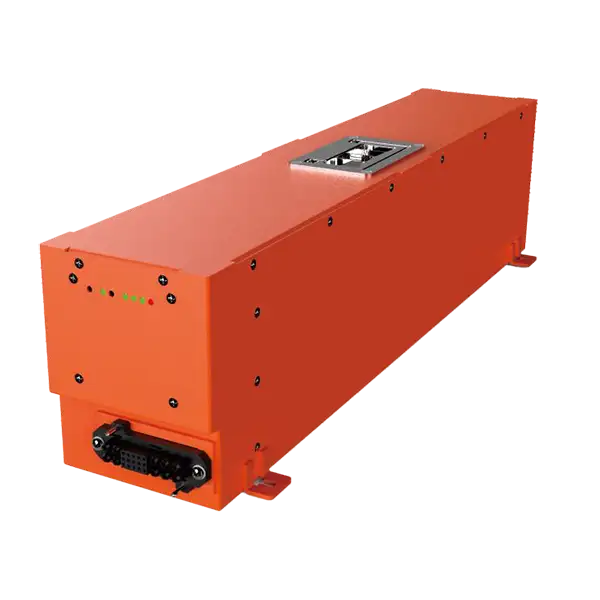

Opportunity Charging: The Key to Continuous Operation
The single most transformative innovation enabled by LiFePO4 chemistry is opportunity charging—a power management approach that eliminates dedicated charging downtime entirely. Rather than waiting for batteries to deplete and then scheduling lengthy charging sessions, AGVs replenish their batteries during brief operational pauses scattered throughout the workday.
During shift changes, an AGV might spend 15 minutes at a charging station while workers transition. At a transfer point where materials are being loaded, the vehicle connects to power for a few minutes. Even brief pauses at staging areas become opportunities to add charge. These distributed micro-charging sessions keep battery levels consistently high without ever removing vehicles from productive service for extended periods.
- Elimination of Battery Swapping: The same battery remains in the AGV continuously, removing the need for time-consuming battery changes, spare battery inventories, and the personnel and infrastructure required to manage battery rotation.
- Dramatic Utilization Improvement: Opportunity charging can increase AGV utilization by up to 35%, extracting significantly more value from existing fleet investments.
- Reduced Battery Capacity Requirements: Because batteries never fully discharge, smaller capacity units can be specified.
- Enhanced Operational Flexibility: Vehicles remain available for urgent tasks without waiting for charge cycles to complete. If production suddenly requires an additional material delivery, the AGV can respond immediately rather than being unavailable due to charging.
- Lower Infrastructure Investment: Opportunity charging eliminates the need for dedicated charging rooms, battery swapping equipment, and battery storage areas.
The success of opportunity charging depends entirely on lithium chemistry. Lead-acid batteries cannot tolerate frequent partial charges—they develop sulfation and memory effects that rapidly degrade capacity and lifespan. LiFePO4 batteries, by contrast, are ideally suited to this charging pattern, accepting rapid partial charges without any negative effects on longevity or performance.
Multi-Shift Operations: True Continuous Manufacturing
During multi-shift operations, AGVs strategically recharge during natural workflow pauses: shift changes that already involve brief production slowdowns, lunch periods when material flow temporarily decreases, or planned maintenance windows when certain production lines are briefly offline. The batteries remain installed in the vehicles during these charging sessions, eliminating the logistical complexity and safety concerns of battery swapping.
Fast opportunity charging ensures large fleets can work continuously without requiring battery exchange stations or charging infrastructure that removes vehicles from service. A facility might deploy charging stations at strategic locations—near production line endpoints, at warehouse staging areas, or adjacent to automated loading docks—where AGVs naturally pause as part of their normal material handling workflows.
This approach delivers compelling advantages:
- Zero Production Interruptions: AGVs charge during natural workflow breaks without impacting production schedules or creating bottlenecks in material flow.
- Optimized Fleet Sizing: Higher vehicle availability through continuous operation means fewer AGVs are needed to maintain required throughput. This reduces capital expenditure on both vehicles and batteries while delivering equivalent or superior operational performance.
- Eliminated Labor for Battery Management: No battery swapping personnel, no dedicated charging room supervision, no battery tracking systems, and no rotation schedule management. Labor previously devoted to power management can be redeployed to higher-value activities.
- Simplified Logistics: Battery tracking, rotation schedules, spare battery inventories, and charger allocation become irrelevant. The operational complexity of the system decreases dramatically.
- Enhanced Workplace Safety: Handling heavy lead-acid batteries (often 1,000+ pounds) poses significant injury risks and exposes workers to corrosive acid. Eliminating battery swapping removes these hazards entirely from the workplace.
Power Your Factory’s Transformation with HIITIO LiFePO4 AGV Batteries
HIITIO’s advanced LiFePO4 AGV batteries are specifically engineered to meet the demanding requirements of continuous automated manufacturing. Available in multiple voltage configurations including 24V, 36V, and 48V options,

Whether you’re upgrading existing AGV fleets to eliminate charging downtime, implementing new automated systems, or expanding operations to true lights-out manufacturing, HIITIO provides customized battery solutions that maximize uptime, reduce total cost of ownership, and support your operational objectives. Explore our complete AGV battery lineup and technical specifications, or contact our engineering team for a customized assessment of how HIITIO batteries can enable true continuous manufacturing in your facility.

